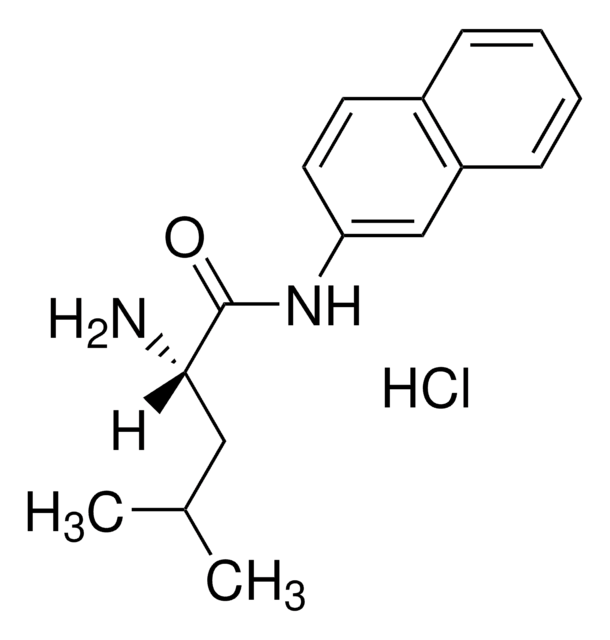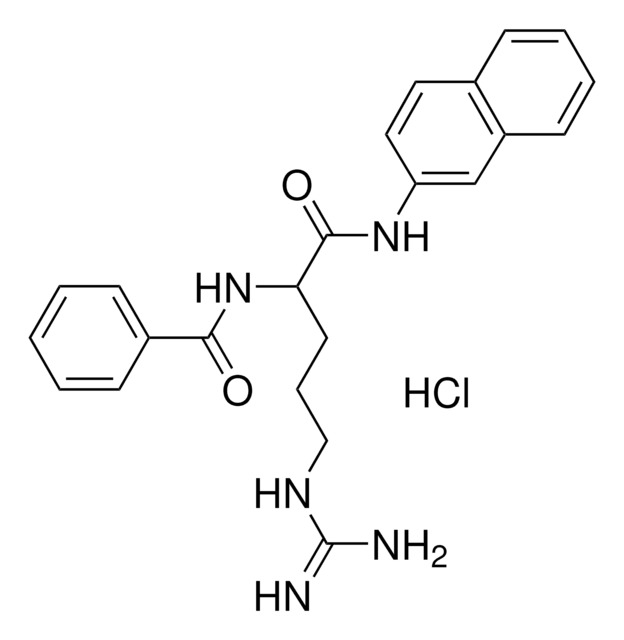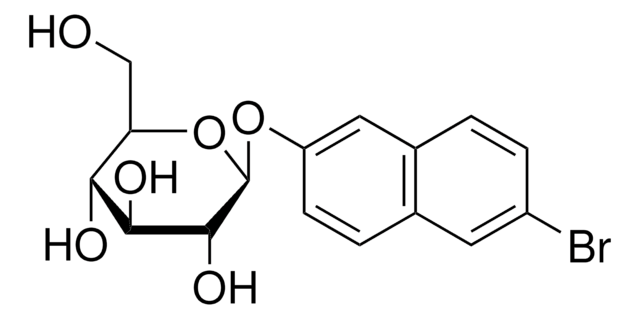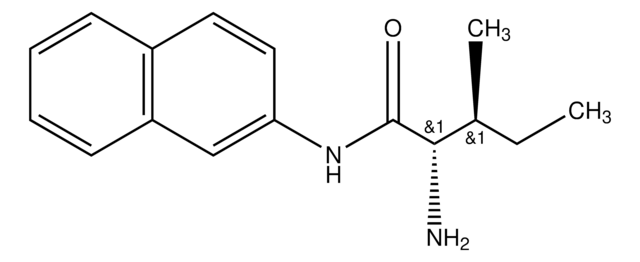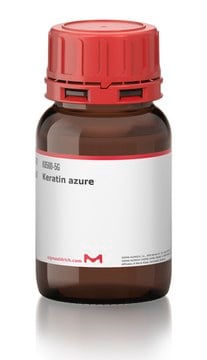L1635
L-Leucine β-naphthylamide
Synonym(s):
L-Leucine-2-naphthylamide
Select a Size
¥9,120
Select a Size
About This Item
¥9,120
Recommended Products
Assay
≥98% (TLC)
form
powder
solubility
H2O: insoluble
storage temp.
−20°C
SMILES string
CC(C)C[C@H](N)C(=O)Nc1ccc2ccccc2c1
InChI
1S/C16H20N2O/c1-11(2)9-15(17)16(19)18-14-8-7-12-5-3-4-6-13(12)10-14/h3-8,10-11,15H,9,17H2,1-2H3,(H,18,19)/t15-/m0/s1
InChI key
JWHURRLUBVMKOT-HNNXBMFYSA-N
Looking for similar products? Visit Product Comparison Guide
Application
- to measure the activity of aminopeptidase in Escherichia coli[1]
- to evaluate the enzyme activity of cathepsin H from rabbit skeletal muscles[2]
- in the proteolytic assay of L-Leucine aminopeptidase[3]
Packaging
Quality
Substrates
Signal Word
Warning
Hazard Statements
Precautionary Statements
Hazard Classifications
Carc. 2
Storage Class Code
11 - Combustible Solids
WGK
WGK 3
Flash Point(F)
Not applicable
Flash Point(C)
Not applicable
Personal Protective Equipment
Regulatory Listings
Regulatory Listings are mainly provided for chemical products. Only limited information can be provided here for non-chemical products. No entry means none of the components are listed. It is the user’s obligation to ensure the safe and legal use of the product.
JAN Code
L1635-BULK:
L1635-1G:
L1635-500MG:
L1635-250MG:
L1635-100MG:
L1635-VAR:
Choose from one of the most recent versions:
Already Own This Product?
Find documentation for the products that you have recently purchased in the Document Library.
Customers Also Viewed
Active Filters
Our team of scientists has experience in all areas of research including Life Science, Material Science, Chemical Synthesis, Chromatography, Analytical and many others.
Contact Technical Service